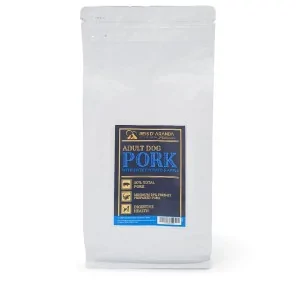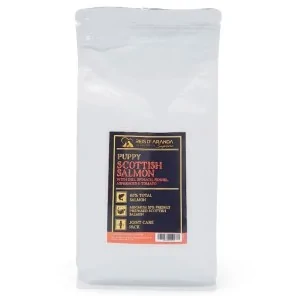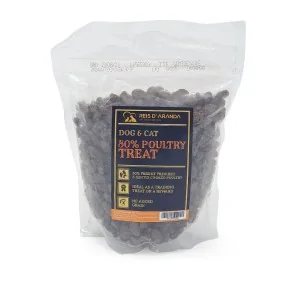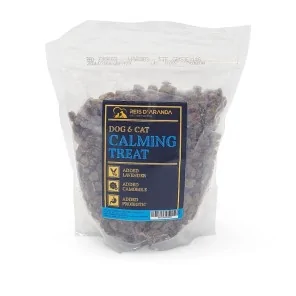The Tornjak originated from genetically homogeneous, almost extinct, indigenous shepherd dogs. These dogs have...
THE DUTCH SMOUSHOND
INTRODUCTION
The Dutch Smoushond (Dutch Smoushond, Hollandse Smoushond or Dutch Ratter) is a small-sized breed of dog descended from German and Dutch terrier-type dogs that were kept in stables to eliminate rats and mice.
Related to the Schnauzer, they are rare and little known outside the Netherlands, their country of origin. They were called Dutch to avoid confusion with the Belgian Griffon, which has similar characteristics.
THE ORIGIN OF THE DUTCH SMOUS DOG
Most of the history of the Dutch Buzzard has been lost to time, and most of its origin will remain a mystery. Most of what is said is little more than pure speculation. All that is clear is that the Dutch Smoushond has been kept in the Netherlands as a great vermin hunter since time immemorial, and is likely to be several centuries old.
Most experts believe it to be a very close relative of the Standard Schnauzer and the Standard Pinscher, and may once have been considered the same breed, but it is impossible to say for certain.
These dogs served as multi-purpose working farm dogs. Their main function was to hunt and kill rats, mice and other vermin. But they also performed other agricultural work. They were guard dogs charged with protecting their families and property, and even herding livestock.
For almost 850 years, what is now Holland was part of the Holy Roman Empire, a feudal political conglomerate that also included what is now Germany, Austria, Switzerland, Slovenia, Belgium, Luxembourg, the Czech Republic and parts of Poland and Italy. and France This empire was so vast that many localised varieties of Pinscher and Schnauzer developed.
It is quite possible that the breed was originally a colour variation of the standard Schnauzer which became especially favoured in the Netherlands. The colour of the dog would probably have been quite popular in the Netherlands; where orange has long been the colour of the royal family and a national symbol.
For countless centuries, the Dutch Smoushond was bred exclusively as a working dog. Their owners cared little for their appearance, as they were sought only for their ability to kill rodents. However, the breed maintained a relatively high degree of uniformity of appearance for a working dog.
The breed became known as Smoushond, which comes from the Dutch word, ‘Smouzen’, meaning ‘Jewish Man’. He was so named because his long sinewy coat was reminiscent of the long beards and curly hair traditionally worn by Hasidic and Orthodox Jews. The name Dutch Smoushond was chosen largely to distinguish the breed as much as possible from the Belgian Griffon.
The role and status of the Dutch Smoushond began to change in the late 1800s. As was the case with many of the British Terriers, the local upper classes discovered that Dutch Smoushond was an excellent urban companion as well as a ratter. The last decades of the 19th century saw the transformation of the breed from a working dog to an aristocratic pet, and it began to be considered the preferred companion of the Dutch nobility. And in 1905, the Hollandse Smoushond Club was established to maintain pedigrees and promote the breed.
As the 20th century progressed, this buzzard faced increasing competition from foreign breeds. Although the popularity of the breed declined somewhat as a result of the arrival of new foreign dogs, it remained locally popular in the Netherlands. On 10 May 1940, the history of the Dutch Buzzard changed forever when Nazi forces from Germany invaded their homeland, despite repeated Dutch attempts to maintain neutrality.
The German occupation was devastating for the Netherlands, but especially for the breed. It was mainly found in the large urban areas, the same areas that suffered the worst under Nazi rule. Breeding of dogs, especially pets, almost ceased completely. Many owners could no longer afford to care for their dogs, and were forced to abandon them. In addition, many Dutch buzzards were killed in the blitzkrieg, during the Dutch resistance, or as a result of the Allied liberation campaign.
By the end of World War II, the Dutch Smoushond population had been severely diminished. There is substantial debate about what happened to Dutch Smoushond after World War II. Many, and perhaps most, experts believe that the Dutch Smoushond became extinct as a purebred dog, and that no purebred member managed to survive the war.
Some even go so far as to say that no cross-bred dogs survived either. Others believe that, although the pedigrees were not preserved, a very small number of purebred Dutch rats managed to survive. What they did agree on was that the breed was extremely rare and on the verge of total extinction. It was also agreed that the last pedigree bed of the Dutch Smoushond was registered with the Dutch Kennel Club (Raad van Beheer) in 1949.
In the early 1970s, Mrs. H.M. Barkman became interested in them and decided to restore the breed. In 1973, Mrs. Barkman established a breeding programme, beginning her programme by collecting mixed breed dogs that closely resembled the Dutch Smoushond of yesteryear. Barkman recruited a small number of friends and other fanciers to help her with her breeding programme. Different experts have different opinions on what this breeding programme achieved.
Some experts claim that the dogs of Barkman and other early breeders simply resembled Dutch Smoushond, but had none of their blood. These experts believe that the modern examples are entirely a recreation of the older breed. Other researchers believe that many, and perhaps most, of the dogs used possessed some Smoushond blood, and some say that even some purebred members may have been discovered.
These researchers claim that the modern breed is not a recreation, but a restoration. Regardless of whether one believes that the modern Dutch Smoushond is a recreation or a restoration, all agree that a large number of mixed breed dogs were used, as well as a substantial number of purebred dogs of other breeds.
Mrs. Barkman and other breeders were very concerned about the future health of the Dutch Smoushond and did not want to see their breed crippled by the many health concerns that dogs with very limited gene pools often have. Their goal was to have as large a gene pool as possible while maintaining the appearance and temperament conformation of the Dutch Smoushond. Because many of the dogs used were mixtures of unknown pedigree, it is impossible to say which breeds were considered in the development of the modern Dutch Smoushond.
It is known for certain that purebred Border Terriers were used, and it is almost universally accepted that at least some Schnauzer, Poodle, Griffon and Terrier mixes were also mixed. Although it took many years and a great deal of effort, eventually the labours of Mrs. Barkman and her fellow breeders were rewarded.
In 1977, the Dutch Kennel Club began re-registering Dutch Smoushond from Barkman's lines, although most did not necessarily meet typical pedigree standards. Approximately 20 years later, the Fédération Cynologique Internationale (FCI) also granted full recognition to the Dutch Smoushond as a member of the Pinscher/Schnauzer Group, waiting until the breed fully met that organisation's exacting pedigree standards.
THE STANDARD OF THE DUTCH SMOUSHOND
APPEARANCE: Rough-coated, lively dog, square in build. The body of bitches may be slightly longer than that of males.
Powerful build and musculature enable him to follow the cart and the horse and also to catch rats in the stables, which is why he was formerly called ‘the gentleman dog of the stables’. Therefore, he should not give the impression of being coarse or rough.
HEAD: The head is one of the typical characteristics of this breed. Seen from above it is broad and short.
CRANIAL REGION
SKULL : Slightly domed. Forehead slightly rounded.
STOP: Marked.
FACIAL REGION
TRUFFLE: Broad and black.
HOCIO: Full with strong, rather short jaws.
PROPORTIONS: 2/3 of length from occipital protuberance to stop; 1/3 from stop to tip of nose.
BELPHOS: Fine and firm, pigmented black.
TEETH : Powerful teeth, preferably with a scissor bite, so that the teeth of the upper jaw close just in front of those of the lower jaw. A pincer bite or slight underbite is still permitted.
EYES: The eyes are also typical of the breed, with a friendly, lively expression, dark, large and round, neither protruding nor sunken.
Eyelids black, lashes dark and well developed.
EARS: Set on high, hanging close to the cheeks towards the front, small, thin, triangular and slightly rounded at the tip.
When the dog is at attention, the tips of the ears rest slightly forward on the cheeks.
NECK: Rather short and well muscled.
BODY: Should give the impression of being robust, but should not be too coarse or long lined.
BACK: Straight, broad, muscular.
LOIN: Slightly convex.
Croup: Well muscled.
CHEST: Broad, not too deep, with arched ribs.
BELLY: Almost not tucked up.
TAIL: Undocked, the tail should be rather short and carried gaily, but not curled over the back.
FOREQUARTERS: Straight, not too close to each other, but in good position under the body. Strong, oval bone.
Shoulders: Moderately sloping, corresponding to moderate angulation of forelegs and hindquarters.
FOREARM: Approximately the same length as the shoulder blade.
ELBOW: Close to the body. Upper arm: Straight limbs with strong bone, set well under the body.
Pastern: Rather vertical.
HANDS: Round, elegant and small (cat foot). Dark nails preferred.
HINDQUARTERS: Moderately angulated, strong, muscular.
Upper thigh: Same length as upper thigh.
KNEE: Moderately angulated.
LEG: Same length as thigh.
Hock joint : Moderately angulated.
METATARSUS: Without dewclaws.
FEET: As above.
HAIR: On the body harsh, wire-like, harsh, straight, although it should give the impression of being shaggy.
From 4 to 7 cm long. Must not be curly, wavy or woolly.
Tendency to become felt-textured is a serious fault. Sufficient undercoat to protect the dog from the weather. The presence of a stripe on the back means that the coat is too long, too soft and the undercoat too sparse.
On the limbs it is of medium length, not dense, pointing backwards, giving the impression of feathering.
On the tail it is dense, without forming fringes of hair.
The head is covered with the same wire hair as the body, although it is a little shorter, at least in the region of the skull. The hair is long on the cheeks, moustache, beard and eyebrows. The hair of the eyebrows may fall slightly over the eyes, but without covering them or affecting the view. The presence of a topknot is considered a fault, as well as a parting on the muzzle.
The hair is shorter on the ears than on the body.
COLOUR: Uniform yellow in all shades, but preferably dark straw yellow. Ears, moustache, beard and eyebrows may be of a darker yellow colour than the rest of the dog. Any colour other than yellow in its various shades is not permitted.
SIZE
HEIGHT AT WITHERS
- MALES: 37 - 42 cm.
- FEMALES: 35 - 40 cm.
WEIGHT: 9 to 10 kg.
FAULTS: Any departure from the foregoing points should be considered a fault and the seriousness with which the fault should be regarded should be in exact proportion to its degree and its effect upon the health and welfare of the dog.
DISQUALIFYING FAULTS:
- Aggressiveness or extreme shyness.
- Any dog showing clear signs of physical or behavioural abnormalities.
- Absence of breed typicality.
- Fraudulent modification of the dog or evidence of such practice by the use of substances or surgery.
N.B.:
- Male dogs should have two apparently normal appearing testicles fully descended into the scrotum.
- Only functionally and clinically healthy dogs, with breed typical conformation, should be used for breeding.
THE HEALTH OF THE DUTCH SMOUS DOG
No health studies appear to have been conducted on the Dutch Smoushond, which makes it impossible to make definitive statements on the health of the breed. Most fanciers seem to believe that the breed is relatively healthy. Several health problems have been identified in the Dutch Smoushond, but most have low to average rates.
However, breeders are very concerned about their health, because the dog has a very small gene pool. Currently, Dutch Smoushond breeders are working very carefully to maintain and preserve the health of the breed and to eliminate unhealthy animals from the breeding lines.
Even so, if you get a Dutch Buzzard, you should be aware of a number of diseases that can occur in your dog:
- Entropion
- Ectropion
- Cataracts
- Arthritis
- Hip dysplasia
- Elbow dysplasia
THE PERSONALITY OF THE DUTCH SMOUS DOG
It is an active dog and Dutch smous dog owners say that their best trait is that they are difficult to frighten. These dogs are usually friendly and get along very well with children and other dogs. These dogs should never show signs of anxiety or nervousness. They should be stable and even-tempered. These traits make the Dutch smous dog an ideal pet for an active family with children and other dogs. They will adapt and thrive in almost any conditions. They were used as mousers throughout history, so they have a strong prey drive and should not be trusted with small animals such as gerbils or ferrets.
To have a happy and well-behaved dog, you need to invest time in their development. The best way to ensure that your Dutch smous dog develops properly is to train it. Be sure to use positive training methods and reward good behaviour rather than punishing bad behaviour. If you use food as a reward, you will quickly begin to see good results with your Dutch smous dog training.
Like training, socialisation is an extremely important part of every dog's life. The socialisation process will ensure that your dog learns social rules and how to behave appropriately with strangers and other dogs, including other animals. Take your Dutch smous dog to busy dog parks where they will have the opportunity to learn different skills and be exposed to different sights, sounds, people and dogs.
CONCLUSION
Unlike most Terrier-type dogs, the Dutch Buzzard is really eager to please. Although not a dominant breed, these dogs are more than capable of deciphering when their owners are not in charge and can assume the role of group leader. So we must train him firmly, but gently at the same time, as he is very sensitive.
Leave a comment
Log in to post comments
















